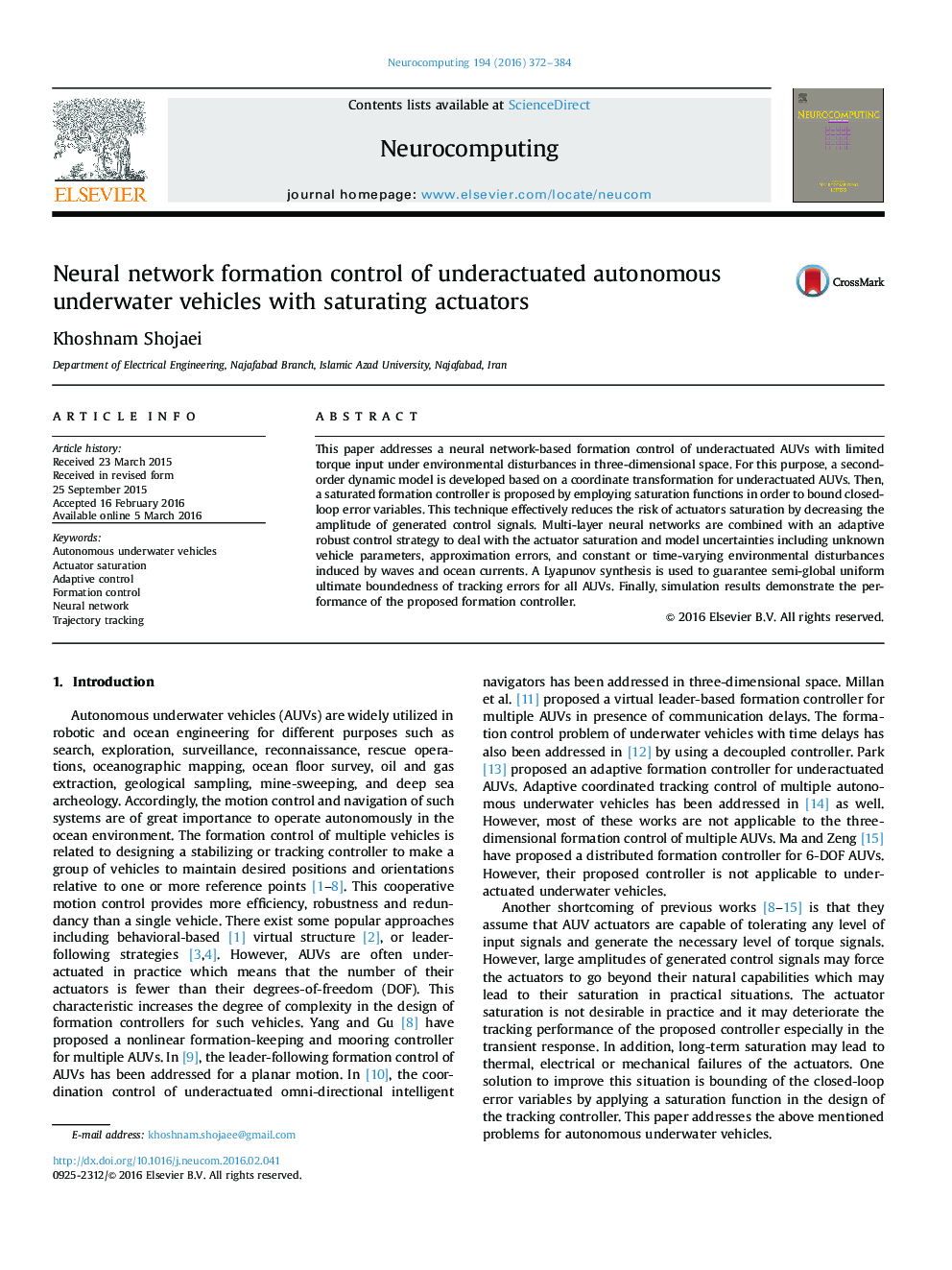| Article ID | Journal | Published Year | Pages | File Type |
|---|---|---|---|---|
| 408325 | Neurocomputing | 2016 | 13 Pages |
•A formation controller is proposed for multiple AUVs in three-dimensional space.•A second-order input-output model is introduced by a coordinate transformation.•A neural adaptive controller compensates unknown dynamics and external disturbances.•Actuators saturation nonlinearity is compensated by multi-layer neural networks.•The transient response of formation tracking is improved for large initial postures.
This paper addresses a neural network-based formation control of underactuated AUVs with limited torque input under environmental disturbances in three-dimensional space. For this purpose, a second-order dynamic model is developed based on a coordinate transformation for underactuated AUVs. Then, a saturated formation controller is proposed by employing saturation functions in order to bound closed-loop error variables. This technique effectively reduces the risk of actuators saturation by decreasing the amplitude of generated control signals. Multi-layer neural networks are combined with an adaptive robust control strategy to deal with the actuator saturation and model uncertainties including unknown vehicle parameters, approximation errors, and constant or time-varying environmental disturbances induced by waves and ocean currents. A Lyapunov synthesis is used to guarantee semi-global uniform ultimate boundedness of tracking errors for all AUVs. Finally, simulation results demonstrate the performance of the proposed formation controller.
